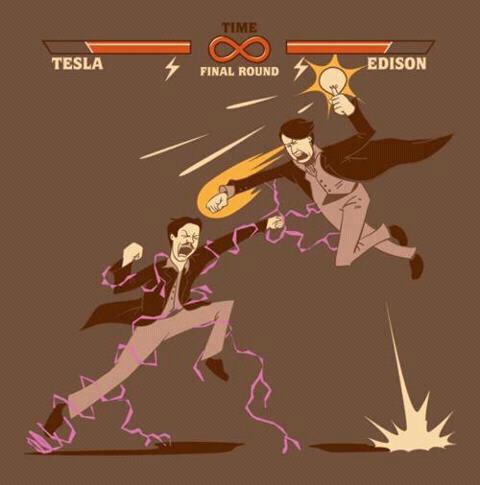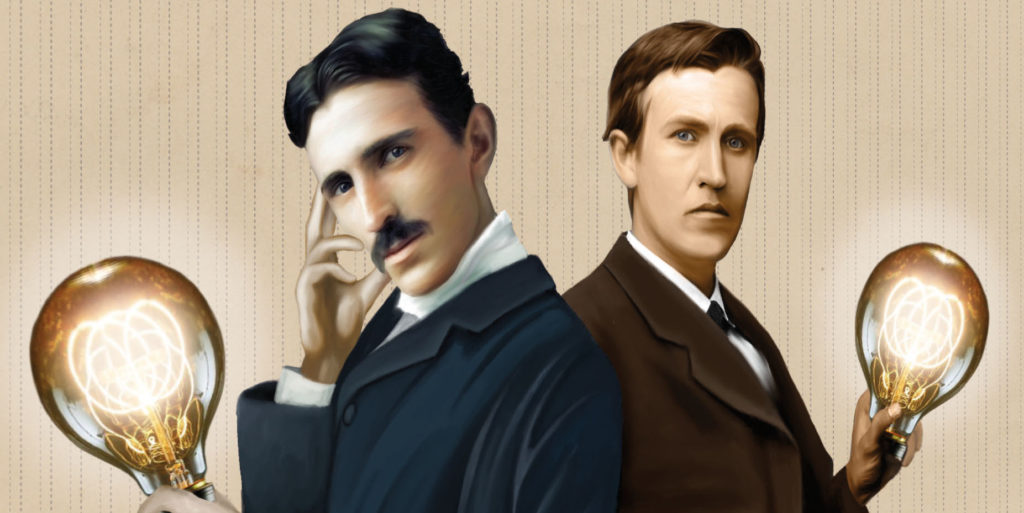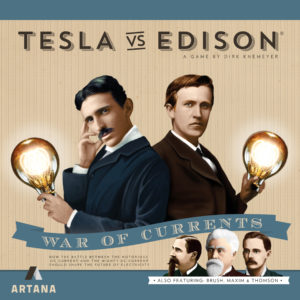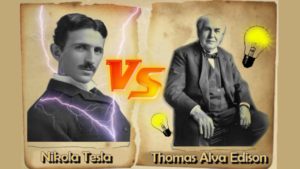We’ve previously looked at Tesla and Edison fighting the War of the Currents (Part I and Part II). Now we come to the final round in the battle.

Two events were major factors in deciding the war of the currents. In 1893 there was a competition to determine who would get the contract to light up the World’s Columbian Exposition. Also known as the Chicago World’s Fair, the six-month-long exposition was to showcase new technology from all over the world. Both the General Electric Company and the Westinghouse Electric Company (powered by Tesla’s alternating current technology) were among the competitors. Edison’s direct current was pitted against Westinghouse’s alternating current. Bidding was brutal as Edison and Westinghouse viciously undercut each other in an attempt to land the plum contract. Other competitors were quickly eliminated, and Westinghouse ultimately won. Tesla’s polyphase alternating current system lit up the fair.
The result was spectacular. Nicknamed the “White City” because of the white stucco buildings surrounding the central pool, the name also could have referred to the brilliant aura created by 92,000 outdoor incandescent lamps that lit the grounds for six months. Including all the interior lamps, the fair required 250,000 modified Sawyer-Mann “stopper lamps,” a competing bulb Westinghouse raced to produce because Edison refused to allow use of his patented long-life bulbs. Edison was not shut out completely, however, as he was able to display several of his own inventions in the showcase electrical building, including the dominating “Edison Tower of Light.”
Because of the success of alternating current at the Chicago World’s Fair, the team of Westinghouse and Tesla also beat out Edison for the next major contract at Niagara Falls. The Niagara River flows north from Lake Erie to Lake Ontario, dropping up to 188 feet over some of the most spectacular falls in North America. Engineers had made only limited use of the power of the falling water until the newly formed Cataract Construction Company (led by former Edison Electric Board member Edward Dean Adams) chose to base its new electrical power plant on a dozen Tesla patents. Tesla’s polyphase generator system beat out Edison’s direct current, but Edison won the contract to string electrical wires from Niagara to Buffalo, nearly twenty miles away.
These setbacks effectively removed Edison from the electric power generation business, a process that had already begun back in 1892, when competition and J. P. Morgan’s maneuverings forced Edison to merge his Edison General Electric Company with the Thomson-Houston Company to form the new General Electric. While somewhat bitter at how he had been treated, Edison turned to other pursuits, including iron ore milling and the development of motion picture projectors. Edison was about to become a movie mogul, albeit a reluctant one. Tesla also turned to other pursuits, including Wardenclyffe.
[This is part II of a three part series on Tesla vs Edison in the War of the Currents, all adapted from my book Edison: The Inventor of the Modern World. Also check out my earlier book, Tesla: The Wizard of Electricity. Both are available in Barnes and Noble stores nationwide. See links below. Part I of the series can be read here. And here is Part II.
David J. Kent is the author of Tesla: The Wizard of Electricity and Edison: The Inventor of the Modern World (both Fall River Press). He has also written two e-books: Nikola Tesla: Renewable Energy Ahead of Its Time and Abraham Lincoln and Nikola Tesla: Connected by Fate. His next book, Lincoln: The Man Who Saved America, is scheduled for release in summer 2017.
Follow me by subscribing by email on the home page. And feel free to “Like” my Facebook author’s page and connect on LinkedIn. Share with your friends using the buttons below.













